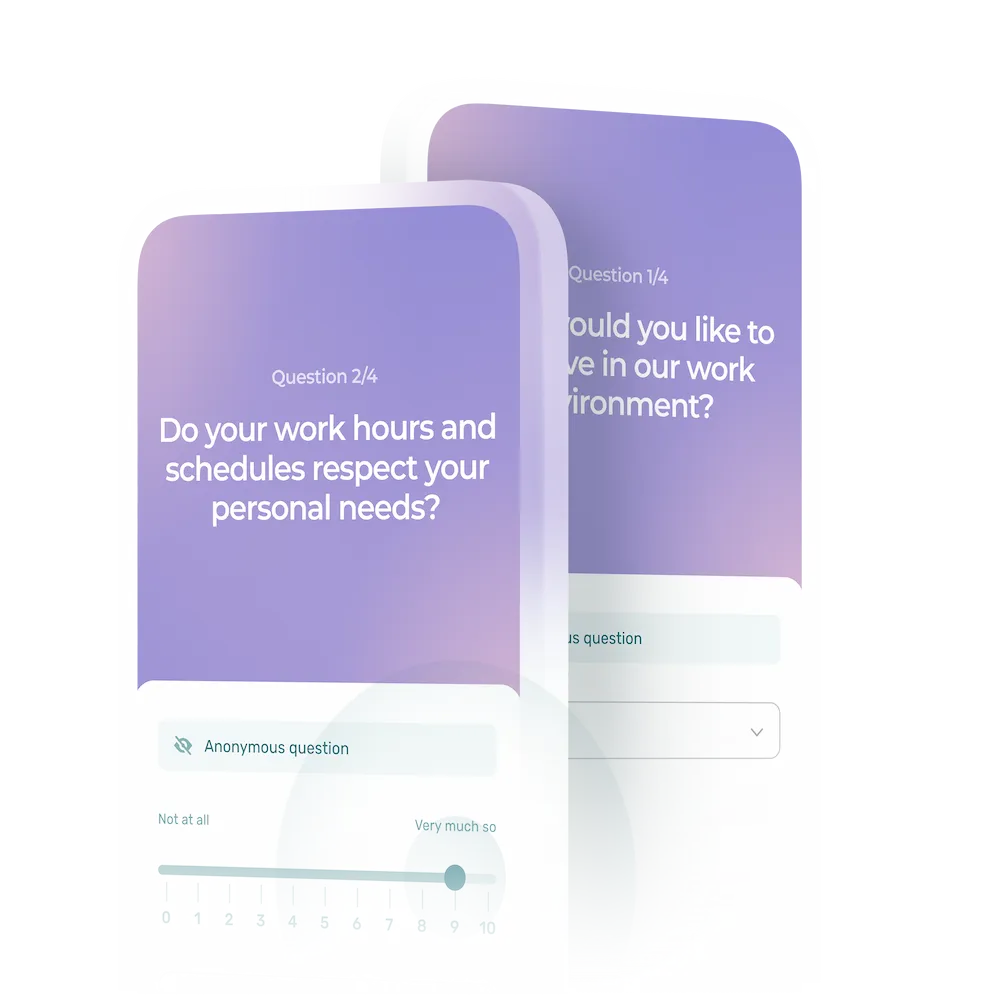There are as many types of workplace conflicts as there are ways of managing them. And for managers looking to resolve these conflicts, it’s no easy matter.
This is why it helps to know which approach to take when a workplace conflict arises—and especially to have concrete examples of what to do.
Of course, each conflict is different. So, instead of giving you a miracle cure to instantly make all your conflicts go away, this post gives you a few tips and examples to help you resolve various conflicts more easily.
Personality Conflicts
Some personality types just don’t mesh—but that doesn’t mean your team members can’t learn to cooperate in a conflict-free way.
The key is to encourage your team to demonstrate empathy and understanding.
When personality conflicts break out on your team, encourage each person involved to put themselves in the other person’s shoes. Urge them to be more understanding and to stop brooding over their differences.
Also put special focus on personality in your recruitment process. Don’t hesitate to ask questions such as “How would you react in a conflict,” “Why did you leave your last job?” etc.
Two Coworkers Creating a Tense Atmosphere
Scenario
Two waitresses aren’t getting along at all. Although they remain respectful of each other, when they work together on the floor, everyone can feel the tension in the air. Different clans are even beginning to form within your team.
How to Resolve the Situation
As a manager, you need to meet with them to understand what’s going on and help them find a solution. You can’t force them to be friends, but they have to understand that they must coexist in a civilized way.
Encourage them to talk and find common ground. By acting as a mediator, you can help ensure an atmosphere of respect.
If, in spite of your efforts, nothing is working, a more drastic solution will have to be found. For example, you could adjust their schedules so that they no longer have to work the same hours.
Conflicts Over Tasks and Responsibilities
On teams, the division of tasks and responsibilities is a frequent source of conflict. This is especially true when communication is less than optimal.
Expectations and Agreement
You have probably already been told how essential it is to communicate your expectations to your employees. What if I told you this wasn’t enough?
Instead, try finding a middle ground.
Rather than impose your vision, talk to your team members. This will allow you to settle on realistic goals.
A quick and easy tip to apply on a daily basis is to always sum up your key points at the end of a discussion. Better yet, ask the other person to summarize what they understood. This way, you can make sure you’re always on the same page.
To boost employees’ engagement and motivation, you can also involve them in decision-making.
Employee Not Performing Their Duties Properly
Scenario
Despite your repeated requests, an employee still fails to do certain tasks when closing up the store. You are displeased because you feel that he isn’t doing his job properly, and decide to meet with him to talk it over.
How to Resolve the Situation
Start by trying to understand why he always neglects certain tasks.
When you talk to him, you find out that he simply never has the time to do them.
He is often helping out clients up to the last minute, and is unable to free himself to finish everything on his list.
He also can’t stay after closing because he has to catch the bus to go home.
If you really want the store closed properly, make sure to schedule enough employees so that all the tasks will get done.
If this is impossible, suggest a more realistic task list.
Leadership-Related Conflicts
Leadership is a highly sought-after quality in the world of work.
This being said, a manager’s leadership style can sometimes cause problems in an organization. This is why it’s important to clearly define your team members’ respective roles and make sure you are properly supporting your managers.
Offer training or mentoring so your management team can develop their leadership skills in a healthy way. Promoting your top seller won’t make him a good supervisor overnight.
The more tools your team has at their disposal, the more effective your management processes will be.
Negative Leader on Your Management Team
Scenario
You recently promoted your top seller to team lead, even though you knew he sometimes had a negative attitude and made sarcastic jokes to the rest of the team.
In the current shortage of labour, letting go of such a successful employee would be unthinkable to you. So, you’ve given him a promotion in spite of his conduct.
However, it’s clear that his management style is inadequate or even inappropriate. Several employees have even complained about his way of managing the team.
How to Resolve the Situation
This kind of situation undermines team morale and cohesion, and makes everyone uncomfortable. There’s a very fine line between this kind of disrespectful behaviour and workplace harassment.
You don’t want to be the boss who allowed the situation to degenerate and spark a lawsuit over labour standards.
Zero tolerance is a must.
Conflicts Over Ways of Doing Things
“All roads lead to Rome.”
Just because someone doesn’t do things exactly the way you do doesn’t mean that their way is no good.
It’s important to be able to put your ego aside at times. Be accommodating and open-minded.
Of course, your employees have to adopt the same attitude. Just because they’ve always done something a certain way does not mean that it’s their way or the highway.
Two Employees Thinking That Their Respective Methods Are the Best
Scenario
Two employees on your team handle orders in a completely different way. You have no problem with their ways of doing things.
However, they are often in conflict because each of them says that the other is doing their tasks all wrong. They clearly can’t find an agreement, and this is straining teamwork.
How to Resolve the Situation
Encourage your employees to find a middle ground. If they can’t do so on their own, or if you feel the tension is rising, don’t hesitate to call a formal meeting.
Explain that the goal is not to identify the guilty party or designate a winner, but to find a compromise. Support them in finding a solution that ensures that no one feels slighted.
Once you have found one, make sure the new procedure is clear and that it’s adopted by all members of your team.
Serious Conflicts
All businesses should provide a healthy work environment for their employees. But even with best practices in place, sometimes various types of serious conflicts can still occur, including discrimination, harassment, bullying, etc.
These conflicts are very delicate to manage, and require that we immediately seek professional help.
Make sure you have an internal policy that makes it clear that these behaviours are prohibited.
An Ounce of Prevention…
In sum, here are our top tips for preventing conflicts in your workplace.
- Make sure to communicate properly with your team;
- Maintain a bond of trust with your employees;
- Have a clear code of conduct;
- Never turn a blind eye and hope the conflict will sort itself out;
- Set your ego aside;
- Put yourself in the other person’s shoes to better understand their point of view;
- Have a rigorous recruitment process in place; and
- Ask a peer for advice if you are unsure of how to proceed.












